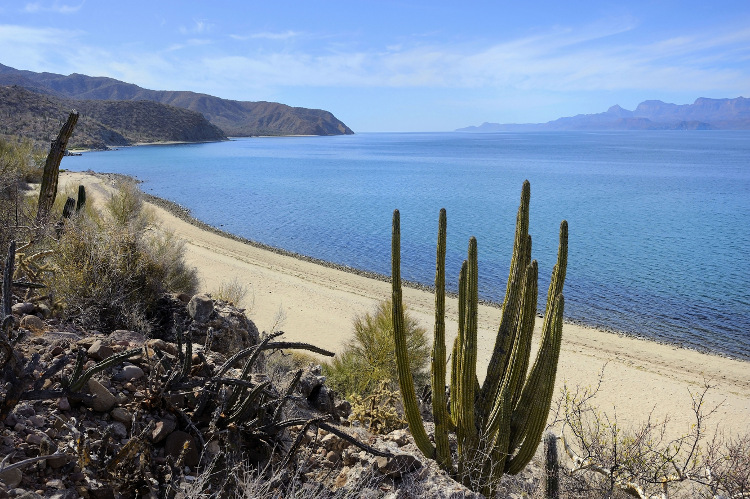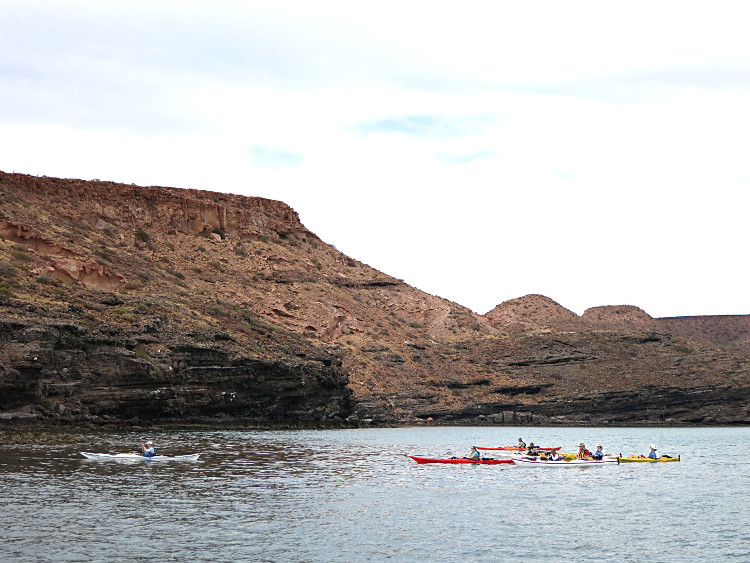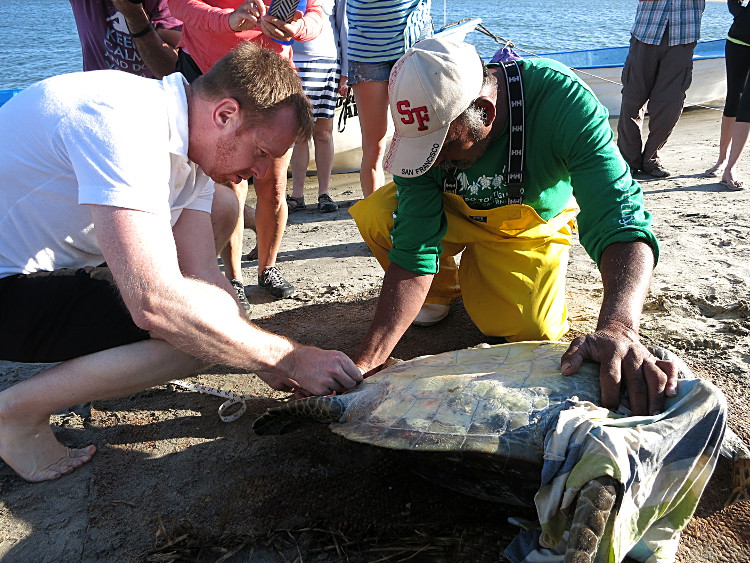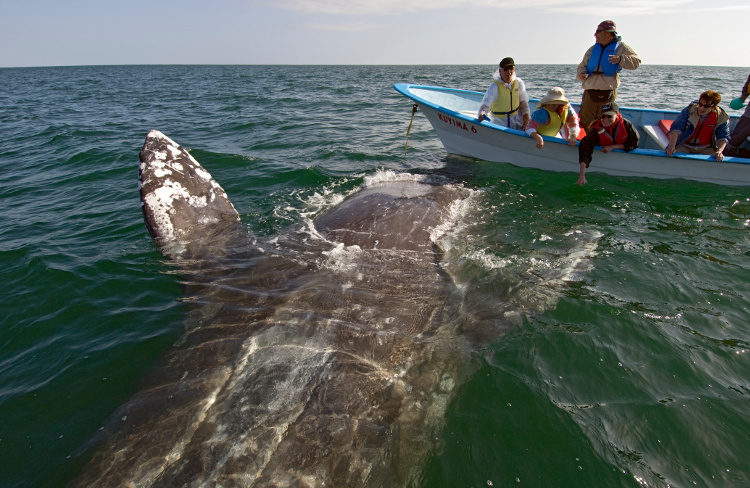
You have to have something special for Unesco to award you World Heritage Status and Espíritu Santo certainly does. Lying just off the east coast of Baja California near the town of La Paz, these two islands offer hikes and pristine beaches aplenty, but the real fun is out on the water where you can kayak from bay to bay, snorkel and dive with the fishes, and head to a sea lion colony for a swim with these inquisitive and playful creatures.
Between Espíritu Santo and the mainland lies one of the best places in Mexico for spotting and swimming with whale sharks, the largest fish in the ocean. Despite many sharks’ man-eating reputation, these guys are more interested in eating plankton than humans, meaning you can get amazingly close to these gentle giants without the Jaws theme tune popping into your head.

If you’ve ever wanted to try surfing there are plenty of worse places to start than the beach at Los Cerritos. This largely undeveloped strip of sand on Baja’s west coast has a school for beginner break-catchers, with a practice session on the beach followed by some actual wave riding. It lies just south of the pretty town of Todos Santos where you can visit the (allegedly) original Hotel California. You can also arrange sea turtle monitoring trips from the town, helping conservationists work with these endangered creatures, and enjoy nerve- and leg-testing mountain bike rides in the rugged and hilly but beautiful countryside nearby.

Another sea turtle monitoring group allows visitors to camp in dunes and go turtle monitoring in Magdalena Bay, northwest of Todos Santos. Enjoy a margarita on the beach as the sun goes down before boarding a boat and heading out into the bioluminescent waters to search for turtles under the starlit sky. Any turtles found are weighed, measured and tagged before being returned to the water. If you’re as lucky as one particularly fortunate travel writer, you might even get a turtle named after you.

Chances are you’ve never babysat a gray whale before, but head up the west coast of Baja California Sur and you might just get the chance. The San Ignacio Lagoon, part of the vast land and sea Vizcaino Reserve, is a huge whale nursery where at the height of the season (roughly January to March) you can expect to see these spectacular creatures in large numbers. Originally feared because of their occasional propensity to overturn boats (who can blame them when their only experience of humans was being hunted almost to extinction?), this species of whale is now seen as one of the most friendly and curious, displaying an interest in visitors that can’t fail to charm. Mothers often swim up to the boats with their calves, only to then swim away for a few minutes leaving the photo-snapping whale-watchers to ‘babysit’ their young. Dolphins might try to photobomb your pics but they can’t compete with a 15-foot-long, 2000-pound ‘baby’.

Jacques Cousteau called the Sea of Cortez (the body of water between Baja and mainland Mexico) the ‘aquarium of the world’ because of the huge diversity of sea life there, and if one creature deserves the title of ‘king of the aquarium’ it’s the blue whale. The largest creature ever thought to have lived, seeing this magnificent whale is a truly memorable experience and the waters off Loreto, the pretty town on Baja’s east coast that’s also home to the first mission church built in all the Californias, offer prime spotting opportunities in season (February to April). Even if you don’t manage to catch sight of this giant of the sea, there’s always the chance to see the acrobatic dolphins and belly-flopping manta rays that live here too.
Clifton Wilkinson traveled to Baja California Sur with support from the Baja California Sur Tourism Board. Lonely Planet contributors do not accept freebies in exchange for positive coverage.